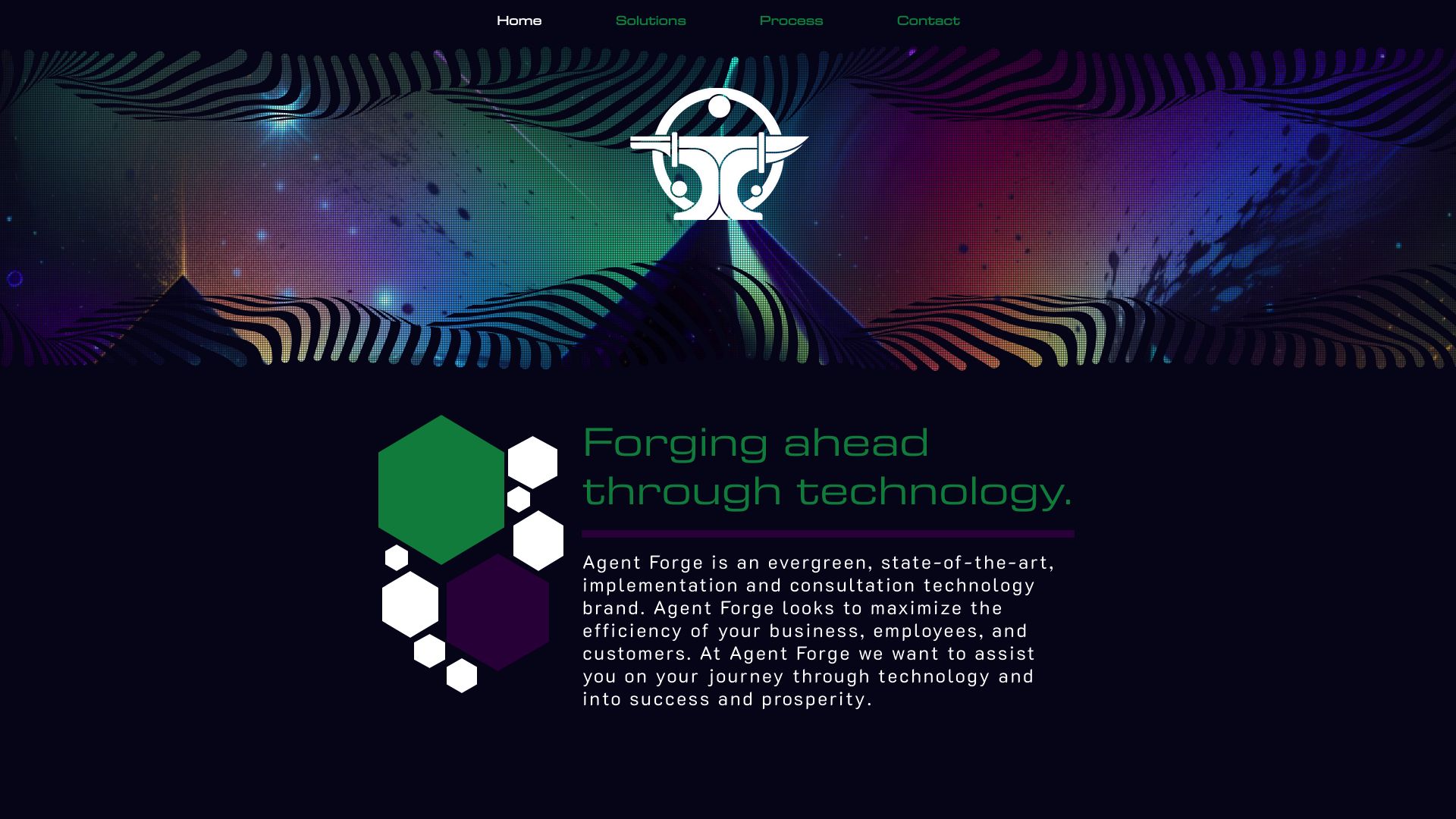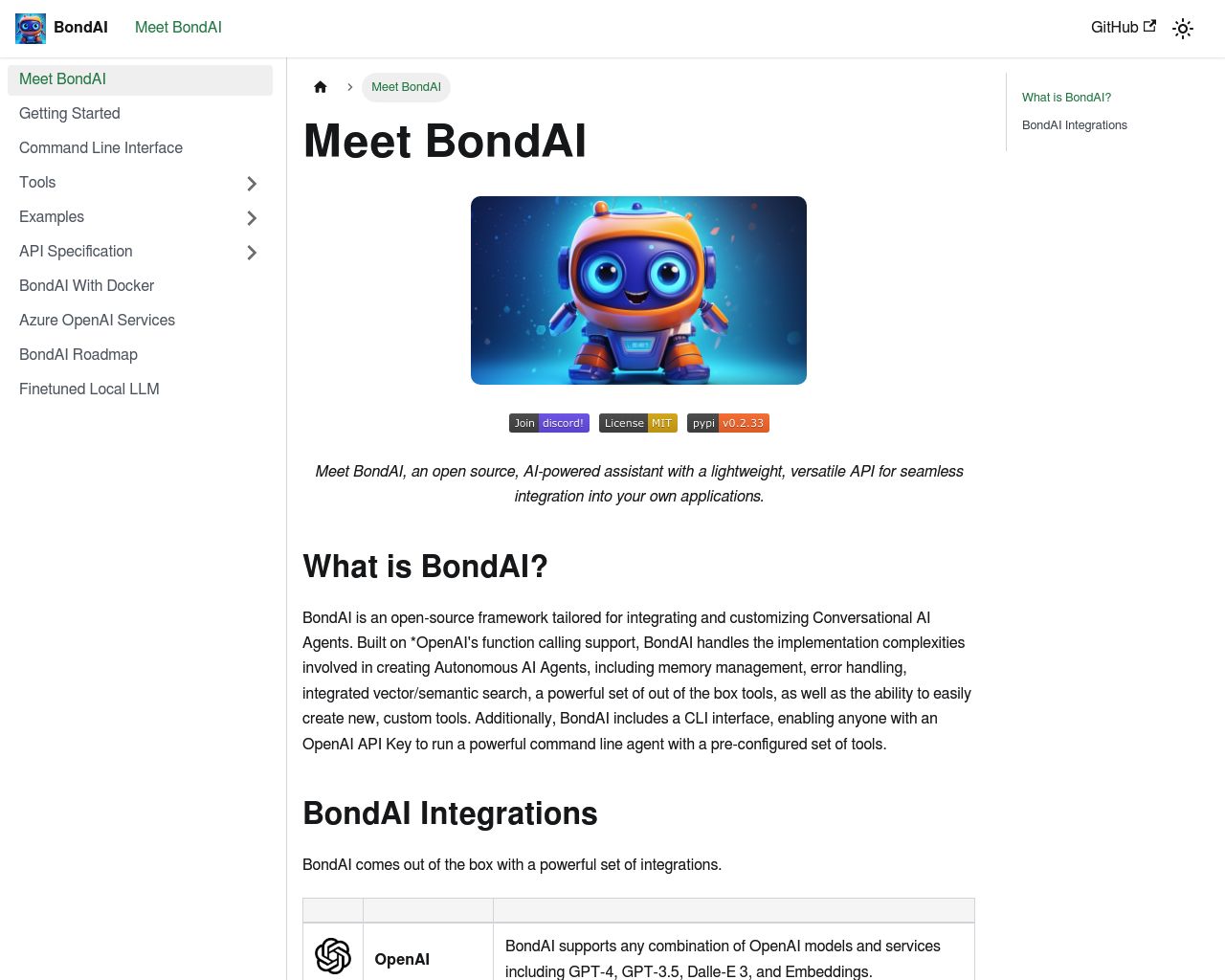Agent Forge vs. BondAI: AI Development Platforms Compared
AI agent development platforms revolutionize how businesses create intelligent, automated solutions. This review compares Agent Forge vs. BondAI, and SmythOS, three leading platforms in this space. Agent Forge offers a flexible open-source framework for building autonomous agents, while BondAI focuses on integrating conversational AI with OpenAI’s capabilities.
SmythOS emerges as a comprehensive solution, combining powerful features with user-friendly design. We’ll explore each platform’s strengths, limitations, and ideal use cases to help you choose the best tool for your AI development needs.
Agent Forge Overview
Agent Forge empowers developers to build and deploy AI-powered autonomous agents and cognitive architectures. This open-source Python framework accelerates the creation of intelligent systems capable of automating tasks and workflows across various domains.


Agent Forge supports major language models like OpenAI’s GPT, Anthropic’s Claude, and self-hosted options via Oobabooga. The framework’s flexible memory management system, powered by ChromaDB, allows agents to maintain context and learn from interactions. Developers can orchestrate complex workflows using multi-agent scripts and pre-built templates, accelerating prototyping and development.
Agent Forge supports major language models like OpenAI’s GPT, Anthropic’s Claude, and self-hosted options via Oobabooga. The framework’s flexible memory management system… allows agents to maintain context and learn from interactions.
The platform’s low-code approach strikes a balance between accessibility and customization. While not offering a fully visual or no-code experience, Agent Forge provides utility classes and structures that simplify agent development. This approach caters to developers seeking a foundation for long-term AI projects while maintaining the flexibility to implement custom logic and integrations.
Agent Forge excels in its extensibility and integration capabilities. The framework supports easy incorporation of third-party APIs and custom data sources, enabling developers to enhance agents with external knowledge and functionalities. This flexibility makes Agent Forge suitable for a wide range of applications, from chatbots and expert systems to business process automation and productivity tools.
Agent Forge excels in its extensibility and integration capabilities… enabling developers to enhance agents with external knowledge and functionalities.
While Agent Forge offers powerful features for AI development, it lacks some conveniences found in more commercial platforms. The absence of a visual builder or debug mode may increase the learning curve for less technical users. Additionally, the framework does not natively support features like explainability tools or audit logs, which may be crucial for enterprise deployments or regulated industries.
BondAI Overview
BondAI offers an advanced framework for integrating and customizing Conversational AI Agents. The platform leverages OpenAI’s function calling support, enabling seamless integration with GPT-4, GPT-3.5, DALL-E 3, and Embeddings. This powerful foundation allows developers to create diverse AI-driven applications with relative ease.


BondAI simplifies the integration and customization process for building Conversational Agents. The framework handles complex implementation tasks such as memory management and error handling, allowing developers to focus on crafting intelligent AI solutions. Its scalability is enhanced through integration with Azure OpenAI Services, providing a robust infrastructure capable of handling increased demand and diverse AI tasks.
BondAI simplifies the integration and customization process for building Conversational Agents… allowing developers to focus on crafting intelligent AI solutions.
The platform includes a rich toolset and flexible API for creating custom tools. Developers can tailor AI functionalities to specific needs with pre-existing tools for internet searches, stock and crypto trading, email interactions, and natural language query processing for databases. BondAI’s recommendation to run within a Docker container, especially for tools requiring file system access, underscores its focus on security and safe operation.
While BondAI offers powerful features for developers, it lacks some capabilities found in more comprehensive platforms. The absence of a visual builder or no-code editor may limit accessibility for non-technical users. Additionally, the framework does not explicitly mention support for multimodal inputs, debug modes, or advanced features like explainability and transparency.
BondAI’s vision centers on making AI integration and agent development more accessible and efficient. By offering a flexible and scalable platform, it aims to streamline the development process for AI-driven applications and services. However, users should consider their specific needs and technical expertise when evaluating BondAI against other AI agent builders in the market.
Feature Comparison
Agent Forge and BondAI offer distinct approaches to AI agent development, with notable differences in their core components and security features. Agent Forge provides a flexible, open-source Python framework for building autonomous agents, while BondAI focuses on integrating conversational AI agents with OpenAI’s function calling support.
Agent Forge excels in its extensibility, allowing developers to incorporate third-party APIs and custom data sources easily. It supports major language models like GPT and Claude, and offers a flexible memory management system using ChromaDB. However, it lacks a visual builder and no-code options, which may increase the learning curve for less technical users.
BondAI, on the other hand, simplifies the integration process for building conversational agents, handling complex tasks like memory management and error handling. It provides a rich toolset for creating custom tools and integrates well with Azure OpenAI Services for enhanced scalability. Yet, BondAI also lacks a visual builder and no-code editor, potentially limiting accessibility for non-technical users.
In terms of security, both platforms have gaps. Agent Forge does not explicitly mention features for data encryption or IP control, while BondAI recommends running within a Docker container for enhanced security, especially for tools requiring file system access. Neither platform specifically addresses advanced security features like audit logs or constrained alignment, which are crucial for enterprise deployments in regulated industries.
| Agent Forge | BondAI | SmythOS | |
|---|---|---|---|
| CORE FEATURES | |||
| Hosted Agents (Dev, Production) | ✅ | ❌ | ✅ |
| Visual Builder | ❌ | ❌ | ✅ |
| No-Code Options | ❌ | ❌ | ✅ |
| Explainability & Transparency | ❌ | ❌ | ✅ |
| Debug Tools | ❌ | ❌ | ✅ |
| Multimodal | ❌ | ❌ | ✅ |
| Multi-Agent Collaboration | ✅ | ❌ | ✅ |
| Audit Logs for Analytics | ❌ | ❌ | ✅ |
| Work as Team | ❌ | ❌ | ✅ |
| Bulk Work | ❌ | ❌ | ✅ |
| Agent Work Scheduler | ❌ | ❌ | ✅ |
| Logs & Monitoring | ❌ | ❌ | ✅ |
| SECURITY | |||
| Constrained Alignment | ❌ | ❌ | ✅ |
| Data Encryption | ❌ | ❌ | ✅ |
| OAuth | ❌ | ❌ | ✅ |
| IP Control | ❌ | ❌ | ✅ |
| COMPONENTS | |||
| Foundation AIs | ❌ | ✅ | ✅ |
| Huggingface AIs | ❌ | ❌ | ✅ |
| Zapier APIs | ❌ | ❌ | ✅ |
| All other APIs, RPA | ❌ | ✅ | ✅ |
| Classifiers | ❌ | ❌ | ✅ |
| Logic | ❌ | ✅ | ✅ |
| Data Lakes | ❌ | ❌ | ✅ |
| DEPLOYMENT OPTIONS (EMBODIMENTS) | |||
| Deploy as API | ❌ | ❌ | ✅ |
| Deploy as Webhook | ❌ | ❌ | ✅ |
| Staging Domains | ❌ | ❌ | ✅ |
| Production Domains | ❌ | ✅ | ✅ |
| API Authentication (OAuth + Key) | ❌ | ❌ | ✅ |
| Deploy as Site Chat | ❌ | ✅ | ✅ |
| Deploy as Scheduled Agent | ❌ | ❌ | ✅ |
| Deploy as GPT | ❌ | ❌ | ✅ |
| Scalability | ❌ | ✅ | ✅ |
| DATA LAKE SUPPORT | |||
| Hosted Vector Database | ❌ | ✅ | ✅ |
| Sitemap Crawler | ❌ | ❌ | ✅ |
| YouTube Transcript Crawler | ❌ | ❌ | ✅ |
| URL Crawler | ❌ | ✅ | ✅ |
| PDF Support | ✅ | ❌ | ✅ |
| Word File Support | ❌ | ❌ | ✅ |
| TXT File Support | ✅ | ❌ | ✅ |
Best Alternative to Agent Forge and BondAI
SmythOS emerges as the superior agentic AI automation platform compared to Agent Forge and BondAI. Our comprehensive solution offers unparalleled versatility and power. SmythOS provides an intuitive drag-and-drop interface that enables users to rapidly build complex AI workflows without extensive coding. This visual approach democratizes AI development, making advanced capabilities accessible to both technical and non-technical users.
We support integration with a vast ecosystem of APIs, AI models, and tools, allowing seamless incorporation into existing business processes. SmythOS excels in multi-agent orchestration, enabling teams of AI agents to collaborate on intricate tasks. This enhances efficiency and scalability far beyond Agent Forge and BondAI’s capabilities.
Our platform offers flexible deployment options across cloud providers and as plugins for popular systems. This ensures AI solutions integrate smoothly into any infrastructure. SmythOS stands out with robust security features like data encryption and constrained alignment. These are critical for enterprise deployments but lacking in Agent Forge and BondAI.
We provide comprehensive debugging tools, audit logs, and performance analytics — giving users full visibility and control. Our no-code options, pre-built templates, and extensive documentation accelerate development for users of all skill levels. With SmythOS, organizations can automate complex workflows, enhance productivity, and drive innovation at an unprecedented pace and scale. The platform’s ease of use, rich feature set, and unlimited use cases make it the clear choice for those seeking a powerful yet accessible AI automation solution.
SmythOS emerges as the superior agentic AI automation platform compared to Agent Forge and BondAI. Our comprehensive solution offers unparalleled versatility and power.
Conclusion
Agent Forge and BondAI offer powerful tools for AI agent development, each with unique strengths. Agent Forge’s open-source framework provides extensive customization options and support for various language models, making it ideal for developers seeking flexibility in building autonomous agents. BondAI simplifies the creation of conversational AI agents with its OpenAI integration and robust toolset, catering to those who prioritize ease of use in agent development.
However, SmythOS outshines both platforms with its comprehensive feature set and user-friendly approach. Our visual builder and no-code options make AI agent creation accessible to a broader audience, while still offering the depth and flexibility that experienced developers crave. SmythOS’s multi-agent collaboration, advanced security features, and extensive deployment options provide a level of versatility unmatched by Agent Forge or BondAI.
For businesses and developers looking to harness the full potential of AI agents, SmythOS offers the most complete solution. Our platform’s intuitive interface, coupled with powerful features like multimodal support, problem-solving capabilities, and seamless integrations, enables users to create sophisticated AI solutions with unprecedented speed and efficiency. Experience the future of AI development by starting your journey with SmythOS today.
Last updated:
Disclaimer: The information presented in this article is for general informational purposes only and is provided as is. While we strive to keep the content up-to-date and accurate, we make no representations or warranties of any kind, express or implied, about the completeness, accuracy, reliability, suitability, or availability of the information contained in this article.
Any reliance you place on such information is strictly at your own risk. We reserve the right to make additions, deletions, or modifications to the contents of this article at any time without prior notice.
In no event will we be liable for any loss or damage including without limitation, indirect or consequential loss or damage, or any loss or damage whatsoever arising from loss of data, profits, or any other loss not specified herein arising out of, or in connection with, the use of this article.
Despite our best efforts, this article may contain oversights, errors, or omissions. If you notice any inaccuracies or have concerns about the content, please report them through our content feedback form. Your input helps us maintain the quality and reliability of our information.
